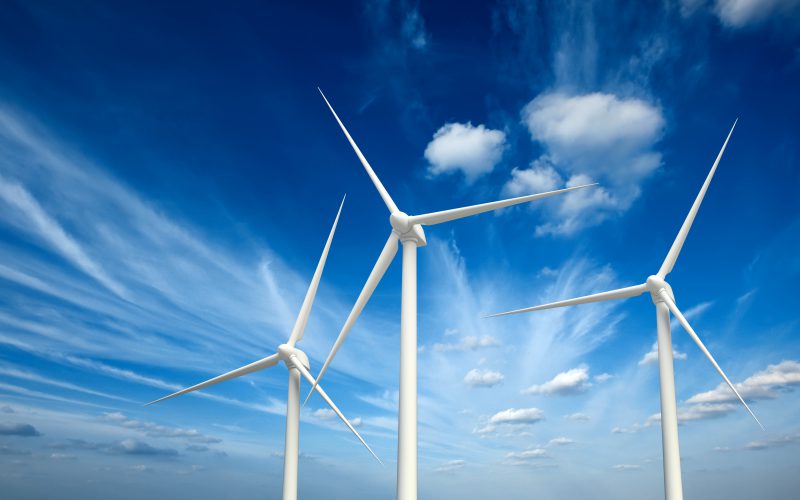Cogeneration is the simultaneous production of two or more types of energy from a single fuel source. It is sometimes referred to as cogeneration, distributed generation, or recycled energy. In general, cogeneration power facilities are 50 to 70 percent more efficient than single-generation plants. Cogeneration is the utilization of otherwise wasted heat (such as the exhaust from a manufacturing facility) to deliver extra energy advantages, such as heat or electricity, to the building in which it is operating. Because recycling waste heat prevents the need of more destructive fossil fuels, cogeneration improves both the bottom line and the environment.
Even though combined heat and power (CHP) technology is sometimes referred to as cogeneration, there are important distinctions. Cogeneration is the process by which a simple cycle gas turbine generates electricity and steam, as well as steam utilized in other processes such as drying. The steam, however, is not utilized to power a steam turbine.
CHP combined-cycle power plants may generate both electricity and usable heat energy from a single source. Thermal energy (steam or hot water) gathered may be utilized to heat and cool as well as generate electricity for a range of industrial purposes. CHP is used by manufacturers, municipalities, commercial buildings, and institutions such as universities, hospitals, and military sites to cut energy costs, boost power dependability, and lower carbon emissions. Because it possesses the industry’s biggest gas turbine product range, GE is ideally positioned to provide its clients with the essential solutions to meet the requisite power-to-heat ratio for their CHP and cogeneration systems.
Process of Cogeneration
A cogeneration plant, like a CHP plant, generates both electricity and heat. Cogen technology, on the other hand, differs from CHP in that it generates energy using a simple cycle gas turbine. The exhaust energy from the gas turbine is then utilized to generate steam. Rather of being redirected to power a steam turbine as in CHP, the steam is completely used in other processes.
Power Plant with Combined Heat and Power (CHP)
A combined heat and power (CHP) power plant generates heat and electricity in a decentralized, energy-efficient manner. CHP plants may be constructed to power a single building or enterprise, or they can be designed to power an entire district or utility.
The main mover in CHP is powered by a fuel, which generates both electricity and heat. The heat is then utilized to bring the water to a boil and create steam. Some of the steam is utilized to power a process, while the rest powers a steam turbine, which generates further power. In a Cogen application, the steam is completely used in a process that generates no more electricity.
The Benefits of Combined Heat and Power
When compared to traditional energy generation, a CHP power plant may provide various benefits and advantages, including:
- Increased efficiency: CHP generates both electricity and heat while using less fuel than typical energy plants. It also collects heat and steam to create extra electricity, reducing the demand for fuel even more.
- Lower emissions: Because CHP systems use less fuel, they may reduce greenhouse gas emissions and other air pollutants.
- Lower running expenses: CHP’s efficiency lowers operating costs and may offer a hedge against rising energy prices.
- Dependability: Because CHP is a self-contained energy plant, it reduces dependence on the energy grid and may provide increased energy security and power generation dependability even in the event of a catastrophe or grid outage.
Large structures and infrastructures can benefit from CHP.
Intelligent combined heat and power production (CHP) makes a substantial contribution to energy generation for hospitals, airports, and other big buildings. CHP solutions not only help operators avoid large supply and distribution losses, but they also save 40% more fuel than separate generation and may help boost overall efficiency, profitability, and environmental responsibility.
The Benefits of Cogeneration

Cogeneration technologies, such as CHP, may provide greater savings and advantages than conventional power generation methods. Cogeneration, on the other hand, is inefficient compared to CHP since it does not employ steam to generate extra electricity.
- District heating: Cogeneration systems are used in district heating power plants to provide both energy and heating to local buildings and households. Unused steam is directed to provide extra energy when a CHP system is utilized for district heating.
- Industrial manufacturing: Industrial CHP plants enable enterprises that require a lot of energy to generate their own steady supply of electricity while increasing efficiency and lowering fuel use. CHP systems can power a wide range of industrial and manufacturing operations while also producing useful energy such as high-pressure steam, process heat, mechanical energy, or electricity.
- Commercial structures: From office buildings and airports to casinos and hotels, CHP plants offer supply clean, dependable electricity that helps fulfill baseload needs while lowering energy costs. Steam both warms and cools the environment while also creating energy that may be utilized to power lights and electronics.
- Institutions: Colleges and colleges, hospitals, jails, military bases, and other institutions rely on CHP facilities to satisfy their electrical and thermal energy requirements while enhancing power reliability. The CHP system has the potential to considerably reduce the costs and emissions associated with standard power generation methods.
- Municipal applications: Combined heat and power (CHP) is well-suited for municipal wastewater treatment facilities. Anaerobic digestion generates biogas in these facilities, which may be used to power onsite generators.
- Residential: CHP systems may be utilized to power energy-intensive multifamily buildings or to assist single-family houses in meeting their energy requirements.
When you have completed and commissioned your LNG Process and System and wish to run it commercially, you must register and obtain approval and a license to operate. The government entity in charge of these entry in the energy or oil and gas sector, particularly in Thailand, is known as the “Department of Energy Business” (DOEB).

